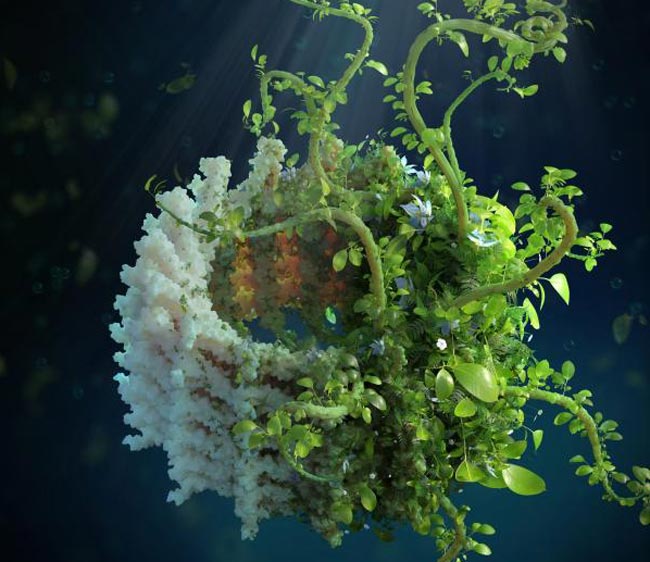New insights into the assembly of photosynthetic membranes

VIPP1 play a central role in the assembly of thylakoid membranes, which are indispensable for plant growth. | © Helmholtz Zentrum München / Ben Engel
An international study has elucidated the structure of a protein that is required for the assembly and stability of photosynthetic membranes.
Plants, algae and cyanobacteria convert carbon dioxide and water into biomass and oxygen with the aid of photosynthesis. This process forms the basis of most forms of life on Earth. Global warming is exposing photosynthetic organisms to increasing levels of stress. This reduces growth rates, and in the longer term presents a threat to food supplies for human populations.
An international project, in which Ludwig-Maximilians-Universitaet (LMU) in Munich biologist Kärin Nickelsen and his research group played a significant role, has now determined the three-dimensional structure of a protein involved in the formation and maintenance of the membranes in which photosynthesis takes place. The insights provided by the study will facilitate biotechnological efforts to boost the ability of plants to cope with environmental stresses.
The initial steps in photosynthesis take place within the ‘thylakoid’ membranes, which harbor pigment-protein complexes that absorb energy from sunlight. It has been known for decades that, in virtually all photosynthetic organisms, a protein called VIPP1 (which stands for ‘vesicle-inducing protein in plastids’) is indispensable for the assembly of thylakoids. “However, how VIPP1 actually performs this essential function has remained enigmatic up to now,” says Steffen Heinz, a postdoc in Nickelsen’s group and joint first author of the new publication. Thanks to the new study, which was led by the Helmholtz Zentrum München, researchers now know a great deal more.
Assembly of photosynthetic membranes
The team used cryo-electron microscopy to determine the three-dimensional structure of VIPP1 at high resolution. Analysis of this structure, in combination with functional investigation of the protein’s mode of action, demonstrated how small numbers of VIPP1 molecules form short strands, which are interwoven to form a basket-like structure. This then serves as a scaffold for the assembly of the thylakoid membrane, and determines its curvature.
Using a related technique known as cryo-electron tomography, the scientists were also able to image VIPP1 membranes in their natural state in algal cells. By introducing site-specific mutations into VIPP1, they showed that the interaction of VIPP1 with thylakoid membranes is vital for the maintenance of their structural integrity under high levels of light stress. This finding demonstrates that the protein not only mediates the assembly of thylakoids, but also plays a role in enabling them to adapt to environmental fluctuations.
The results provide the basis for a better understanding of the mechanisms that underlie the formation and stabilization of thylakoids. They will also open up new opportunities to enhance the ability of green plants to withstand extreme environmental stresses.
All latest news from the category: Life Sciences and Chemistry
Articles and reports from the Life Sciences and chemistry area deal with applied and basic research into modern biology, chemistry and human medicine.
Valuable information can be found on a range of life sciences fields including bacteriology, biochemistry, bionics, bioinformatics, biophysics, biotechnology, genetics, geobotany, human biology, marine biology, microbiology, molecular biology, cellular biology, zoology, bioinorganic chemistry, microchemistry and environmental chemistry.
Newest articles

Innovative 3D printed scaffolds offer new hope for bone healing
Researchers at the Institute for Bioengineering of Catalonia have developed novel 3D printed PLA-CaP scaffolds that promote blood vessel formation, ensuring better healing and regeneration of bone tissue. Bone is…

The surprising role of gut infection in Alzheimer’s disease
ASU- and Banner Alzheimer’s Institute-led study implicates link between a common virus and the disease, which travels from the gut to the brain and may be a target for antiviral…

Molecular gardening: New enzymes discovered for protein modification pruning
How deubiquitinases USP53 and USP54 cleave long polyubiquitin chains and how the former is linked to liver disease in children. Deubiquitinases (DUBs) are enzymes used by cells to trim protein…



